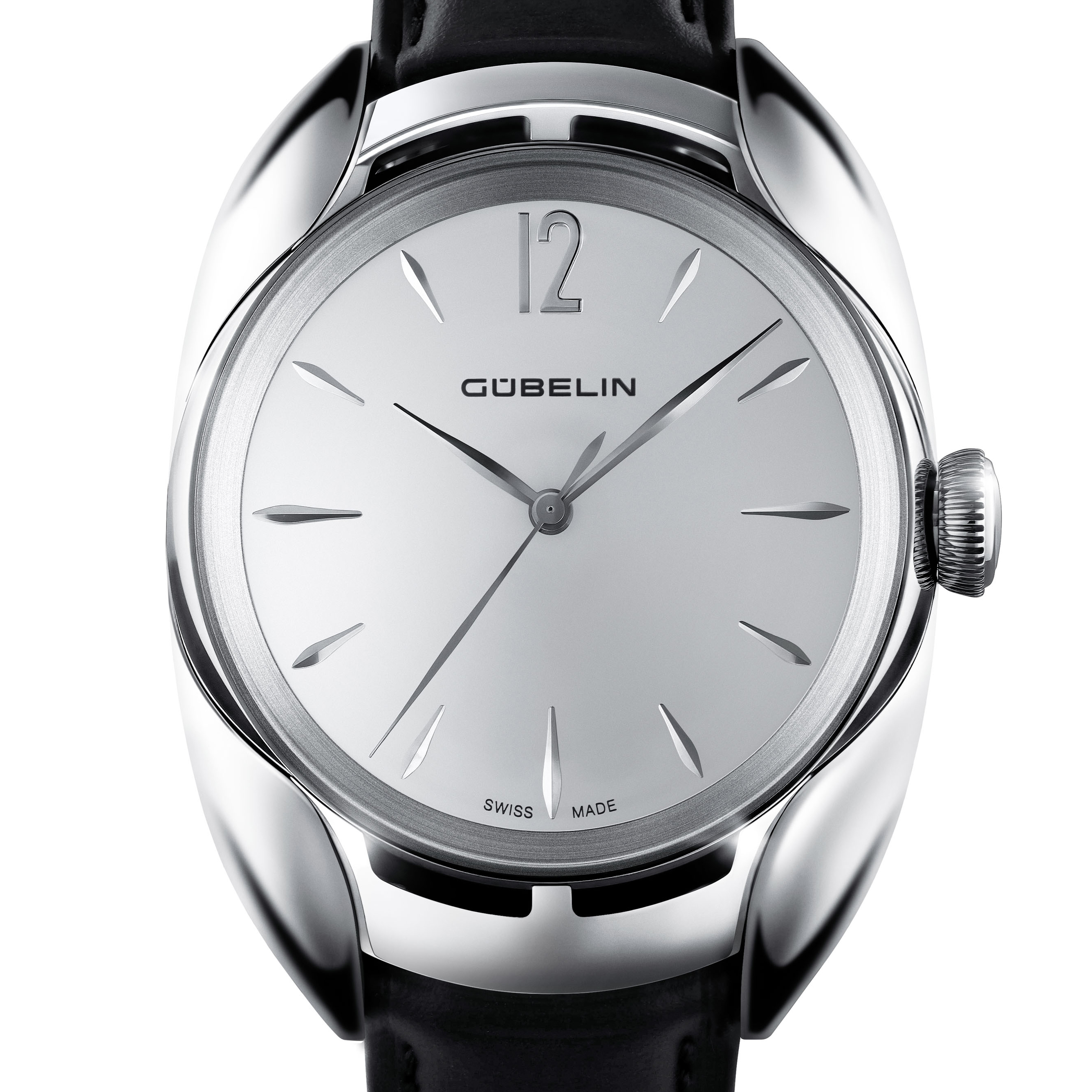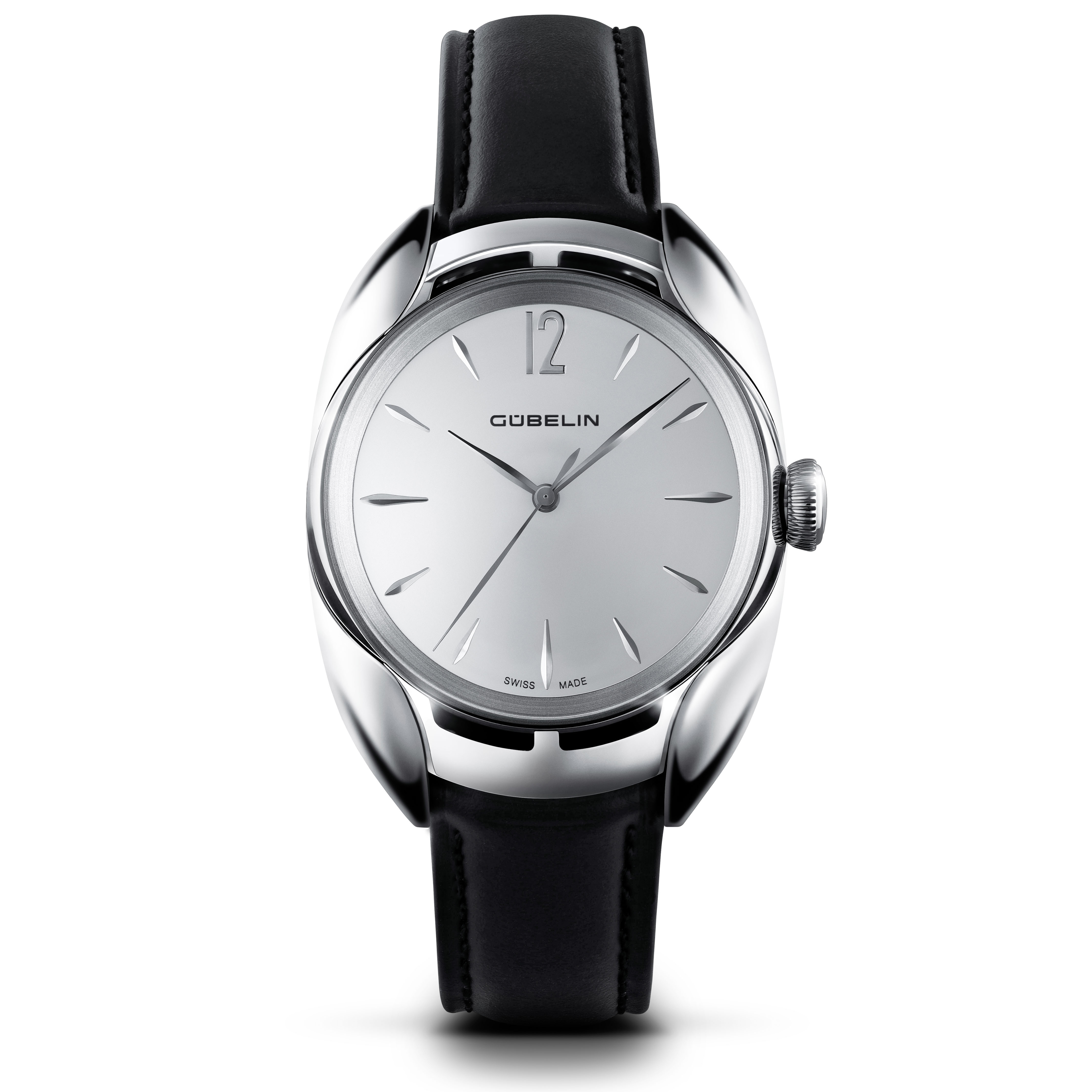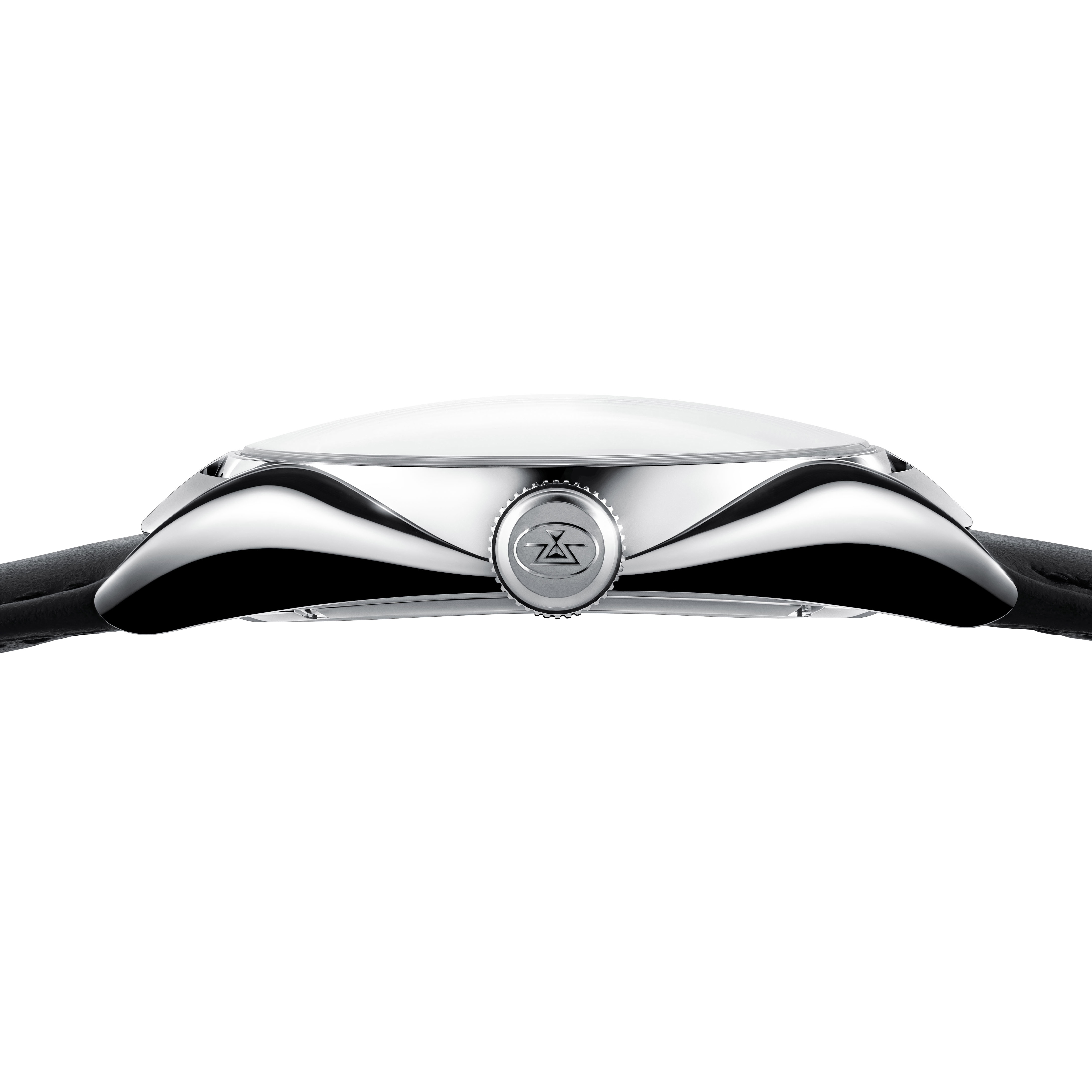
Ipsomatic 170th Anniversary Limited Edition
Power reserve: 43 h, 18000 vph
The Gübelin Ipsomatic watch is designed by the renowned architect Santiago Calatrava, as an act of friendship between the two families (Gübelin and Calatrava). His work and art is known for the fluid forms and it is clearly visible in the iconic shape of the watch case, which is very unique but still elegant and classic. This platinum-crafted, limited edition of 170 pieces unites form and function.
Powered by the historical Felsa calibre 1560, the Ipsomatic honors the House of Gübelin’s horological tradition, founded in 1854 as watchmakers. Reviving this movement, that has disappeared for decade but now been discovered like a rare & unique gemstone, celebrates history and renews existing resources.
Inspired by Ipsomatic models from the 1950s and 1960s, its rotor, based on Felsa’s Bidynator, is decorated as a tribute to a 1954 Gübelin Ipsomatic jubilé watch that also was powered by a Felsa Bidynator.
Signature details as the iconic ruby on the clasp and hourglass on the crown affirm the Ipsomatic as a genuine Gübelin watch. Santiago Calatrava’s drawing of two bulls adorns the back.
Pioneering traceability, this watch is the world’s first timepiece with Proof of Authenticity, combining the individual Gübelin tracer, that is tamper-proof, with the Provenance Proof Blockchain for a new level of verifying authenticity. This invisible tracer has the size in the nanometer spectrum and is fused with the material and can be identified generations later.



